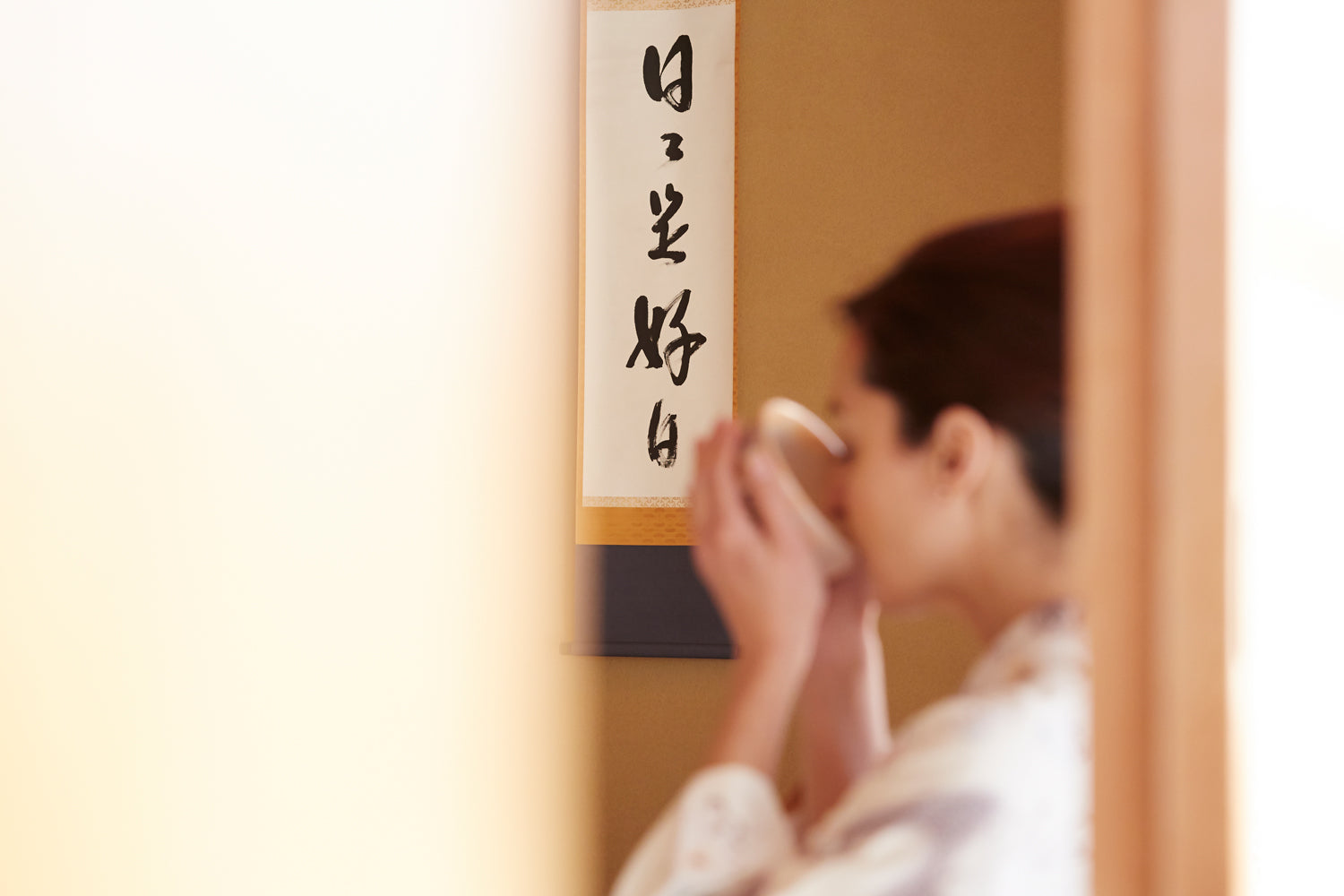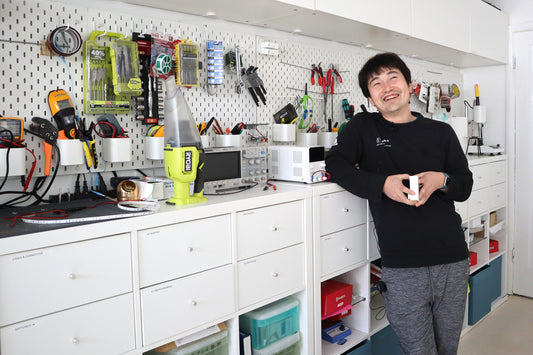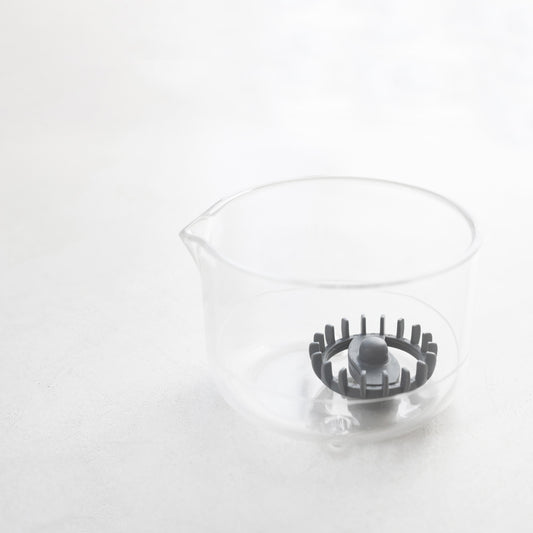

A guide to ceremonial grade matcha
Shopping for quality matcha can be confusing: Prices vary wildly and there‘s actually no industry standard for “ceremonial grade.“ Fortunately, traditional values from “chado,“ or “the way of tea“ can be used to evaluate high-quality matcha.
Contents
- Let’s start with the tea ceremony
- Standards of ceremonial grade
- Making our daily ritual reflect ceremonial standards
1. Let’s start with the tea ceremony
To understand what is ceremony-worthy, you should have a basic understanding of the tradition. The Japanese tea ceremony is a ritual based on "wabi-sabi" and Buddhist values. (A cursory definition of wabi-sabi is "a Japanese aesthetic concept that celebrates the beauty of imperfection, impermanence and the natural.") It encompasses a multitude of disciplines and art including tea-making, hospitality, architecture, gardening, floral arrangement, calligraphy and more.
The ceremony begins even before the guests enter the teahouse. The path whispering through the garden, the humble teahouse entrance and the layout of the tatami floor mats are all among the many prescribed parts of the ceremony. The room is quiet and void of its host, except for a few details that complement the season: a carefully placed floral arrangement, a hanging scroll of calligraphy or painting and handmade sweets that may also complement the tea selection. The host then prepares the tea with a pre-set order of positions and movements. "Cha-ji," or "long ceremonial gatherings," may include a full meal, sweets, "koicha" or "one shared bowl of very thick matcha" and "usucha" or "individual bowls of tea." Each detail and movement are practiced and meaningful. The established order of events, aesthetics, preparation and even the host’s dress are all achieved by years of meticulous training and intention.
Like the solitary scroll, the graceful flower arrangement and perfectly paired sweets, the tea is also carefully selected. Only the finest quality of matcha is offered to guests. The matcha leaf is ground just before the ceremony so it can be as fresh as possible. In recent years, some people have begun to use pre-ground powder in their ceremonies, but using freshly-ground matcha is a more authentic way to practice the ceremony, as it was done before. Matcha, or ground tencha, is used in the Japanese tea ceremony, while tea offerings in Chinese, Korean and Vietnamese ceremonies include other types. The selection of matcha is the purest, highest quality and most delicious tea available.
The first person to bring tea seeds and the particular method of whisking tea powder into hot water was a monk named Eisai, who had studied in a Chinese temple. Other monks in the temple used this tea preparation because the resulting tea helped them to stay awake for long hours of meditation. As this variety and preparation method spread, the merchant and warrior classes took interest. They began to use matcha in lavish and showy tea-tasting parties in which expensive tea equipment and art were flaunted by the wealthy. In the 16th century, the tea ceremony was reclaimed and codified by Sen no Rikyu, who wanted to strip it of the garishness that characterized its earlier manifestation. The ceremony developed with the philosophy of wabi-sabi and "Wa Kei Sei Jaku," or "the four general principles that now govern the ritual: harmony, respect, tranquility and purity." The teahouse was redesigned as a humble structure with minimal aesthetics, simple tea equipment and an emphasis on natural, imperfect beauty. The teahouse was impeccably clean and of prescribed dimensions. The doorway was made small so that all guests had to crawl through on their hands and knees, symbolizing equality.
Along with monks, samurai also held the tea ceremony in high esteem, and it appealed to their strong sense of order and discipline. They were encouraged to nurture a peaceful environment, and so they studied the arts of floral arrangements, gardening, sacred texts, calligraphy and tea. The tea ceremony helped to bring their minds to a state of calm. It was a ritual that allowed them to reflect on the psychologically challenging realities that they experienced in their work. Oftentimes they would drink a bowl of matcha before going into battle. In addition to providing them with sustained energy, a pre-battle ceremony afforded them intentional time with loved ones, with the knowledge that it may be their last moments with friends and family.
As with monks, samurai and all Teaists, the ceremony affirms cultural values of harmony, beauty, simplicity, hospitality, purity, a reverence for order and the natural world.
2. Standards of ceremonial grade
In accordance with the values embodied in the tea ceremony, we also like to think of ceremonial grade matcha as being the finest, the purest, with the most desired qualities. But which matcha is of a ceremonial grade? The truth is, we cannot trust labels because there are no standards or measurements from the industry. Beware of marketing lingo and clever packaging. There is nothing preventing a company from calling a culinary grade matcha “ceremonial grade” and marking up the price. (Culinary grade refers to lower quality matcha used for baking and cooking. At Cuzen, we suggest using the best matcha even for cooking and baking, because good food is made with good ingredients.) So in lieu of industry standards, let us look to the tea ceremony masters for a standard with which to select ceremony-worthy matcha. We can examine how a matcha is produced, processed and preserved, and then deduce which matcha is the best for a ceremony. We should keep concepts in mind like harmony, purity and natural beauty.
"Oiemoto-Okonomi," or "the grand tea master's favorite," is the premium, most cherished matcha that has been used for ceremonies. In the spirit of simplicity, nature and beauty, the oiemoto-okonomi is often chosen from a small farm, ensuring its qualities will be pure and pronounced. A matcha that comes from one specific location, unblended with teas from other regions, is referred to as single origin. The qualities of a single origin are distinct and unaltered, making it a desirable tea for the thick koicha served at the beginning of the ceremony. A single origin tea comes from one region, and the region typically has established and esteemed tea farms that use time-tested techniques. Some of the most famous regions for matcha, and single origin matcha specifically, are Uji, Kyoto, Kagoshima, Tenryu and Toyota.
To highlight an example, one of our Okumidori single origin teas comes from the Kirishima region of the Kagoshima prefecture. Selecting a matcha that comes from the first harvest, like our Okumidori, results in the tastiest, brightest, most aromatic tea, packed with the most medicinal benefits. It is even better if the tea comes from an organic farm, where harmonious relationships between the farmer, the plants, the environment and the small creatures are maintained with ethical farming practices.
This especially holds true if the leaves are ground very close to the time of the ceremony. Serving freshly-ground matcha parallels tradition. It preserves the best qualities of the tea and its medicinal benefits and exhibits hospitality. It increases harmony because the taste, aroma and color will be more pronounced and pleasant, due to the prevention of oxidation.
3. Making our daily ritual reflect ceremonial standards
The tea ceremony provides us much more than just standards for quality tea. It can also inform our daily ritual. By striving for harmony with nature, our bodies and our minds, as well as establishing order, prioritizing simplicity and emphasizing natural beauty, we can carve out a beautiful and peaceful space from which to start our day. Like samurai who took time to reflect on the deeper significance of daily realities and meaningful moments with loved ones, this can be an excellent opportunity for important reflections and communion. And like monks who favor tea to energize them in a calming way, we can set the desired tone for our day with a warm bowl of frothy matcha. We can give our own selves and guests the best hospitality with the highest quality, using simple and modern techniques that reflect the traditional ways of the ancient ceremony.
Although there is no definition for ceremonial grade matcha or a guidebook for making new rituals in our daily lives, we can look to the practices and established order of the tea masters for direction.
Related products
-
Organic Matcha Leaf packets
Regular price From $24.00 CADRegular priceUnit price / per$24.00 CADSale price From $24.00 CAD -
Matcha Maker Starter Kit
Regular price $415.00 CADRegular priceUnit price / per -
Organic Single Origin Matcha Leaf
Regular price From $63.00 CADRegular priceUnit price / per -
Whisking cup
Regular price $21.00 CADRegular priceUnit price / per












